String beans - a delicious garden crop, the cultivation of which becomes widespread. It grows well both in the summer cottage and indoors. The main thing is to adhere to the rules of planting and care in the open ground. It is desirable to grow regionalized varieties. Good yields can be obtained by observing the recommended timing and planting pattern.
Content
Features of String Beans
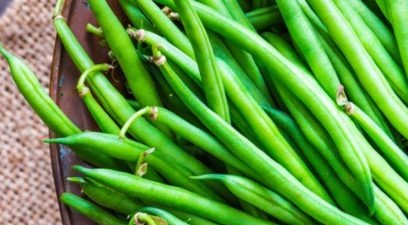
Although beans are thermophilic, the main problem when growing them is not cold summers, but long daylight hours. The homeland of legumes is Latin America, which is located near the equator. A day there lasts about 12 hours. Such conditions are optimal for the development of legumes. The white nights that are characteristic of the northern regions interfere with the normal development of plants.
The inflorescences of green beans are small, of different colors, but more often they are white or greenish. The color, shape, length of grains and pods of different varieties is different. Fruits can be rounded or flat, even or curved, as can be seen in the photo. Common colors are green, purple, and yellow. Less common is pink, mottled, or white beans. By the method of growth, legumes are divided into 2 types:
- Bush. A small, compact plant that is grown without support. Beans tolerate low temperatures well. The fruits ripen almost simultaneously.
- Curly. The length of the vine is 2.5-3 m. It grows up, clinging to a support. The yield of curly beans is high, and the fruiting period is long.
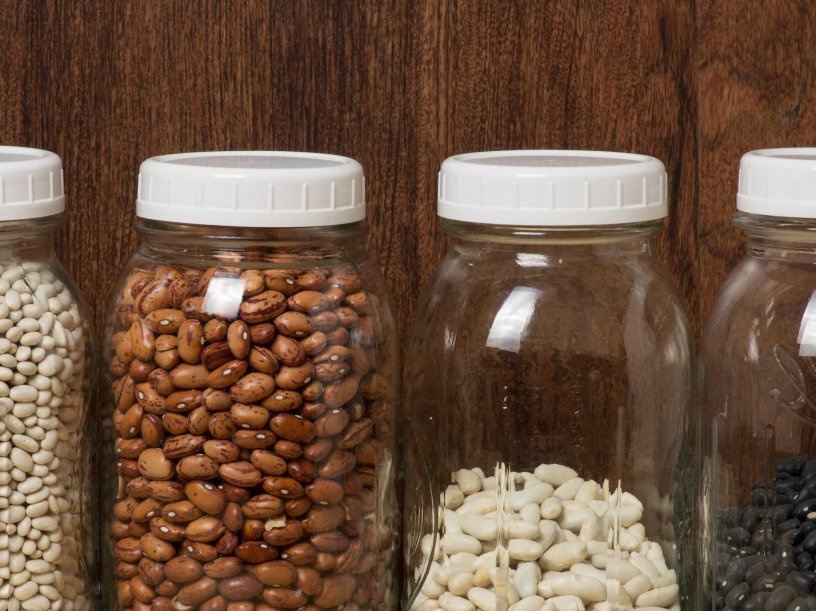 You may be interested in:
You may be interested in:String beans are rich in beneficial substances: proteins, vitamins, amino acids, flavonoids and minerals. Vegetarians appreciate it for a large amount of protein, the ability to use the product as a complete replacement for meat. Grains are added to salads, preservation, first and second courses. Beans include many varieties. The choice of variety depends on how the crop will be used: in the form of young fruits or ripened grains.
There are 3 botanical types of green beans:
- Asparagus culture is distinguished by delicate pods, devoid of parchment layer. Green beans are kept frozen.
- Shelling varieties are grown because of the delicious grains. In dried form, they can be stored for 5-6 years.
- Semi-sugar beans form pods that are suitable for food at the stage of milk ripeness. When they harden, only grains are used for culinary purposes.
Dates of sowing beans
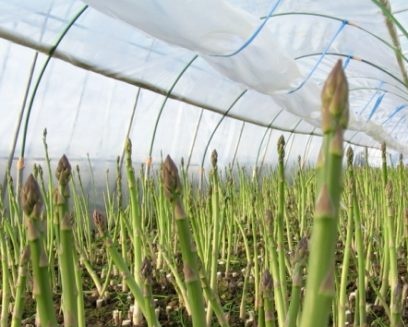
In the southern regions, beans are sown in late April. In areas with a temperate climate, beans are planted in open ground at the end of May, when frost is no longer in sight. In the Urals and Siberia, dates are shifting to early June.Sprouts are able to withstand temperatures not lower than 0 ° C, and at -1 ° C they will die. After a short freeze, the seedlings will survive, but will slowly develop and give a bad crop. The optimum daily temperature for legumes is + 20 ... + 25 ° С.
Beans are planted when the soil warms up to + 12 ... + 15 ° C to a depth of 10-12 cm. According to popular observations, the beginning of flowering of chestnuts indicates that the earth is quite warm. To begin planting earlier, the ground is covered with plastic wrap for heating. After sowing the beans, the beds need to be covered again. The film is removed when the night temperature rises to + 12 ° C.
The best varieties of green beans
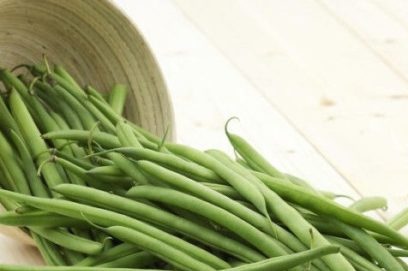
Beans have about 50 varieties. Most of them were created by breeders. When choosing a variety, in addition to yield, you need to consider the possibility of its cultivation in a particular region. In order not to cause difficulties when growing beans in open ground, plant varieties adapted to the climatic conditions of the region should be planted.
Varieties for Moscow region, Ukraine and Belarus
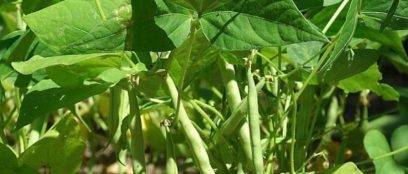
In the suburbs, Ukraine and Belarus, the climate is mild and warm. Here you can grow almost any variety of beans. Gardeners prefer to plant such varieties:
- Moscow white green-shoot 556 is a medium-term ripening culture. The fruits are harvested 100 days after sowing. The bushes are low - only 25 cm. The leaves of the pods are covered with a thin parchment film. Plants tolerate short-term drought well.
- Nomad is a mid-early variety. Climbing plant. Beans are oval in shape, dark yellow with a faint purple pattern. The pods do not contain coarse fibers. The variety is not affected by the fungus.
- Bergold is an asparagus bean variety characterized by high yields. The fruits ripen early. Milk ripeness occurs 55-60 days after planting. The pods are soft and juicy. The bushes are compact, 40 cm high. The pods are yellow, slightly curved, 15 cm long. The grains are oval, white. Plants abundantly bear fruit, bringing more than 2.5 kg from 1 m2.
Varieties for the middle strip and the Urals
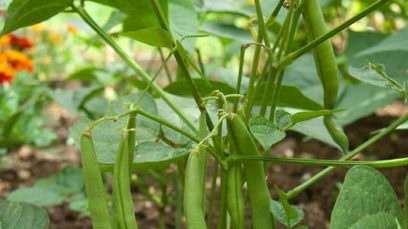
In the middle zone and the Urals, the soil warms up late. For such areas, early varieties are suitable:
- Oran is an early ripe grain crop. Harvested 80 days after the emergence of sprouts. The bushes reach a height of 40-55 cm. The pods are slightly curved, 9-12 cm long. The seeds are white, small. Productivity is 1.5-2 kg from 1 m2. The variety is appreciated for its excellent taste.
- Pink is an early ripe variety. From the moment of seed germination and ripening of the crop, 65-85 days pass. Bushes grow up to 3 m in height, therefore, they require props. Pods green with purple touches. They are juicy and tender, without parchment fibers. Marble pink grains.
- Fatima is a high-yielding variety. Shoots reach a length of about 3 meters. Technical ripeness occurs 55 days after the emergence of sprouts. Fruiting is long. The pods are light green, without bending, up to 23 cm in length. Seeds are white with veins. The taste of asparagus beans is delicate, sugar. From 1 m2 harvest 3.2-3.5 kg of fruit.
Varieties for Siberia
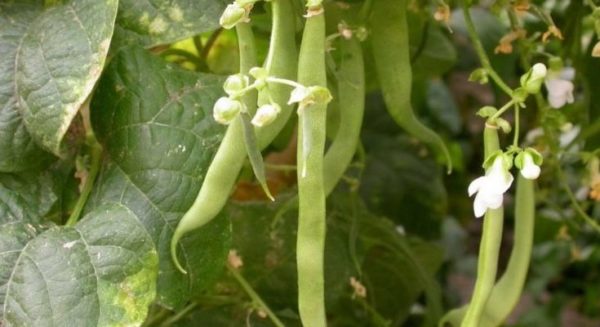
The Siberian climate is harsher compared to the European part of Russia. Spring is cold, constant heat is set late. Gardeners most often grow beans of the following varieties in Siberia:
- The winner is curly beans, distinguished by large pods. They are removed 85-90 days after emergence. Fruits reach a length of 28-30 cm. Purple beans with black dots. From 1 m2 You can get 1.5 kg of fruit. Plants have strong immunity and cold tolerance. Due to the dark red inflorescences, beans are often planted for decorative purposes.
- The oil king is an early ripe asparagus bean. The fruit ripening period lasts 45 days. Tubular pods are delicate and tasteful.The bushes are compact, grow up to 40 cm in height. The fruits are roundish, bright yellow, 25 cm long. They are delicate, slightly oily in taste. Productivity of the variety is high - 2-2.3 kg / m2. Beans are resistant to fungal and viral diseases, tolerates drought well.
Growing string beans indoors
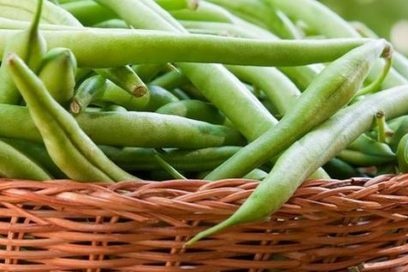 The technology for cultivating green beans in a room requires suitable conditions. It can be grown on the loggia or balcony. It is better to plant bush varieties, because they do not require much space, and the crop ripens en masse and early. However, with tall windows, even curly beans will grow well. The following varieties are suitable for indoor cultivation: Bona, Sweet courage, Neringa, Blue Lake. To decorate the interior fit Violetta, Golden neck, Raspberry ringing.
The technology for cultivating green beans in a room requires suitable conditions. It can be grown on the loggia or balcony. It is better to plant bush varieties, because they do not require much space, and the crop ripens en masse and early. However, with tall windows, even curly beans will grow well. The following varieties are suitable for indoor cultivation: Bona, Sweet courage, Neringa, Blue Lake. To decorate the interior fit Violetta, Golden neck, Raspberry ringing.
Bean roots are superficial, so large containers are not needed. A 3-liter flower pot is enough for the bush plant, and a 30-35-liter box is enough for the liana. Tanks are filled with garden soil and rotted manure in a ratio of 2: 1. You can make a mixture of compost, sand and peat. For the prevention of diseases, crushed chalk or activated carbon is added. The soil must be nutritious with a neutral pH. For climbing varieties, supports are placed 1.5 m high.
Germinated bean seeds are planted in pots in early May. The soil is moistened as it dries. The procedure is carried out in the morning, trying to avoid getting water on the stems. After the formation of the second pair of leaves, watering is stopped. It is renewed when the buds appear. Bushes bloom 1.5 months after planting. Fertilizers are applied once every 2 weeks. Plants are fed with phosphorus-potassium fertilizers or ash infusion.
Lack of light is compensated by illumination with fluorescent lamps. Lighting is organized so that daylight hours last no more than 12 hours. In summer, plants feel great on western or eastern windows. At home, the grain yield will be low. Therefore, beans are mainly planted to get milk pods, although there will not be as many as in the garden.
Rules for sowing beans
To seedlings appeared faster, bean seeds must be properly prepared for planting. The event includes calibration, disinfection and soaking. Before preparing seeds, they need to be warmed up in the sun. Grains must be laid out on the southern windowsill and kept there for at least 7 days. You can’t put planting material on the battery.
Preplant seed treatment
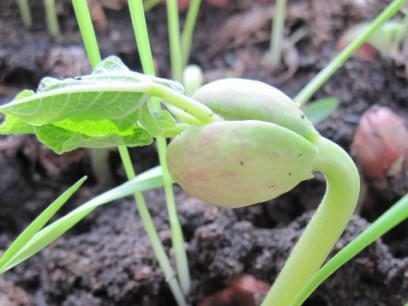
Pre-sowing preparation will increase the germination of beans, prevent the development of diseases. The process consists of the following steps:
- Calibration Damaged and discolored seeds are thrown away. Selected grains are immersed in a 3-5% solution of sodium chloride. Instances that have surfaced are unsuitable for landing. Seeds remaining at the bottom are thoroughly washed with water.
- Disinfection. Grains are incubated for 20 minutes in a 2% solution of potassium permanganate (2 g per 100 ml of water). Then they are washed and dried. Instead of potassium permanganate, a biological fungicide can be used: Maxim, Baikal-EM, Alirin-B or Bayleton.
- Soak. A damp cloth is placed at the bottom of a wide container, then beans are placed on it. Top they are covered with wet gauze, folded in several layers. Planting material is kept for 12-15 hours, making sure that it always remains wet. It is useful to add a couple of drops of a growth stimulator to water: Epina, Kornevin or Zircon.
- Hardening. Used in regions with late return frosts. Soaked grains of beans are kept in the refrigerator at a temperature of + 4 ° C for 5-6 hours.
Site selection and soil preparation
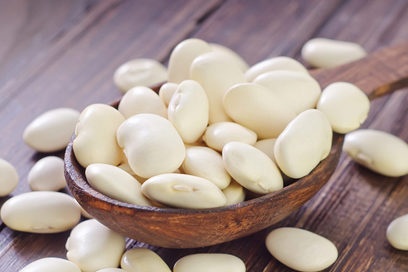
A good harvest of green beans can be grown on a light, sheltered from the wind plot. Legume is recommended to be planted in fertile soil with a light structure. On sandy or clay soils, especially with a high location of groundwater, bushes grow weakly. In wetlands, the roots simply rot. In the garden, beans should be planted after nightshade, cucumbers, cabbage, carrots, beets, and corn. Bad predecessors will be beans, peas, soybeans, peanuts and lentils. Beans cannot be returned to their original place within 3-4 years.
If the soil was well seasoned with organic matter, it is enough to add phosphorus-potassium mixtures. Beans independently enrich the earth with nitrogen, so you do not need to add a nutrient. Its excess causes an intensive growth of green mass to the detriment of the crop. If the land is poor, during the autumn digging at 1 m2 add the following components:
- compost or rotted manure - 4 kg;
- potash fertilizers - 20-25 g;
- superphosphate - 30 g.
2 weeks before planting bean seeds, the soil is loosened, potassium fertilizer is re-applied. Wood ash is also suitable, which must be added at the rate of 0.5-0.7 liters per 1 m2. Beans cannot tolerate the increased acidity of the soil. The optimal pH is 6-7. If they are higher than normal, the soil is calcified with dolomite flour or fluff. Substances close up to a depth of 20 cm. Before sowing seeds, weeds are removed from the beds.
The scheme and depth of planting beans
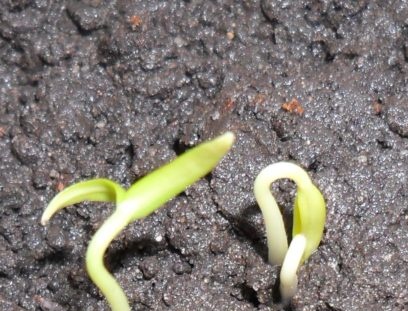
Shrub varieties of culture are sown in rows or staggered, making holes at a distance of 20-25 cm. Between the rows leave spaces of 40-45 cm. 2 beans are placed in each hole. On one bed it is not advisable to do more than 4 rows. Curly varieties are planted according to a 30x50 cm pattern. 5 seeds are placed in each hole. If the ground is not wet enough, pour some water. When one leaf is formed on the shoots, 3 strong seedlings are left, and the rest are removed.
Curly beans properly grow on a support. The columns should be strong, because adult plants with fruits are very heavy. Legumes can be planted with corn, sunflowers, near a fence or gazebo. A trellis with a height of 1.5-2 m is installed on the bed. Their stakes are built, between which a twine or wire is pulled.
When grown in a nesting manner, a bean culture is planted around a wooden stake, to the top of which ropes or rods are attached. They can be fixed with wire. The rope is placed around the perimeter of the circle so that a structure in the form of a pyramid is obtained. Metal or plastic pipe cuts will not be suitable as a support. On a slippery surface, the shoots will not hold.
How to plant green beans
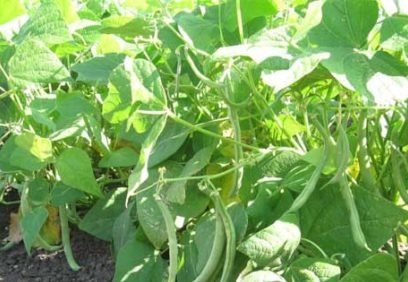
Planting bean seeds in open ground can be carried out in two ways: ordinary or tape. In the first case, the plants are placed in one line at a distance of 25 cm from each other. The average row spacing is 45 cm. This method requires a large area, as landing density is reduced. Ordinary sowing provides a more convenient harvest, and during torrential rains the bushes quickly dry out and the fungus does not develop.
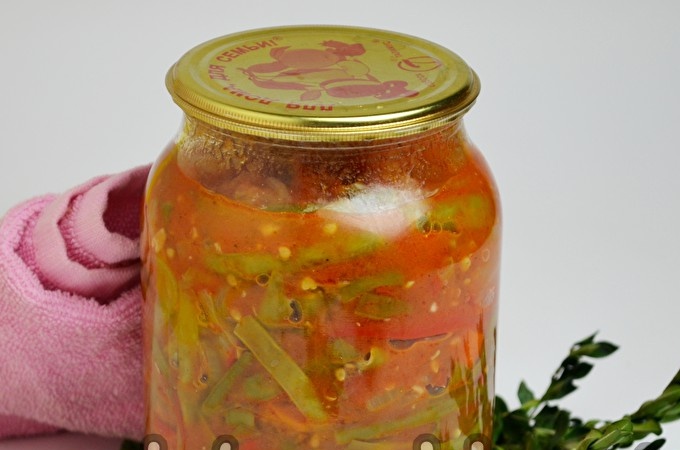 You may be interested in:
You may be interested in:With tape sowing, 2 or 3 rows approach each other, forming a tape. It turns out two- or three-line landing. The distance between the holes is left the same as with the ordinary method, and the row spacings are made wider - 60-70 cm.Tape sowing allows you to save space on the site and water during irrigation. Thanks to its small planting area, weeds are easier to control.
String Beans: Growing and Care
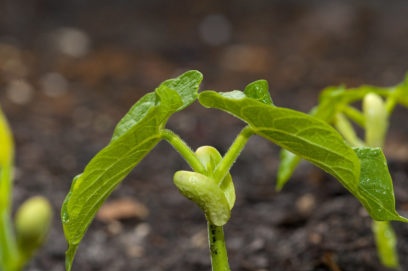
Seedlings from planted seeds appear after 15-25 days. When the sprouts reach a height of 10 cm, they are spud. Such a measure will help plants gain a foothold in the ground. The procedure is repeated several times per season. Extra sprouts do not tear out, but pinch off so as not to damage the roots. To maintain moisture, the soil between the rows can be sprinkled with dry grass or humus. A layer of mulch inhibits weed growth. In order to redirect nutrition to the fruits, the top is removed in the climbing varieties when the stems grow to 2 m in length.
Watering and feeding
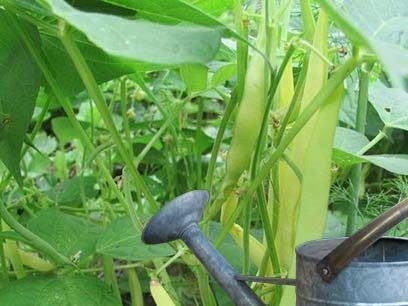
The technology for growing bush beans includes watering, weeding and fertilizing. Do not allow the soil to dry out. With a lack of moisture, the ovaries of green beans begin to crumble en masse. During flowering, plants are watered every other day so that the top layer does not dry out. When the fruits are tied, the soil is rarely moistened, but abundantly. On one plant spend 1.5-2 liters of standing water. Its temperature should not be lower than + 18 ° C. The interval between watering is increased to 6-7 days. When the soil dries out slightly, it must be carefully loosened.
When caring for beans, complex fertilizers are added. Plants are responsive to top dressing: the pods become fleshy, and the stems are powerful. During the season, fertilizers are applied 3 times:
- The first top dressing is carried out 1 month after emergence. Superphosphate is added to the soil at a rate of 30-40 g / m2.
- The second time the plants are fed 21 days after the first. On 1 m2 10-15 g of potassium salt are added.
- Beans are fed a third time after 3 weeks. They can be poured with infusion of grass diluted with water in a proportion of 1:10.
Pest protection
With proper seed preparation, diseases rarely occur. Crop rotation must be observed. It is recommended to treat the soil with Fitosporin. Among insect pests, it is worth noting aphids, whiteflies, bean kernels and sprout flies. They multiply rapidly and are able to destroy the entire crop. Grains before planting should be held for 3-4 days in the freezer so that the bugs and their larvae die.
For preventive purposes, planting can be treated with a biological product: Acarin, Bitoxybacillin, Boverin or Fitoverm. Plants are sprayed at least three times. The tool can be used at any time during the growing season, as it is non-toxic. Biological products do not harm insect pollinators and the environment. You can get rid of aphids if you spray the plants with soapy water or onion infusion.
Harvesting Beans
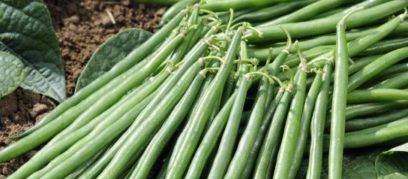
Bush beans have friendly fruiting. Harvest can be removed in 2-3 doses. Curly varieties bear fruit for 6-8 weeks, up to a strong cooling. Pods must be collected 1 time in 5-6 days. Timely removal of fruits stimulates the formation of new ovaries. Harvest time for beans depends on the variety of culture:
- in early varieties, the pods begin to take off about 50 days after the appearance of sprouts;
- in mid-season - after 70 days;
- in later - after 90-100 days.
Green pods or ripened beans are suitable for food. Young asparagus beans are harvested 10-12 days after flowering. The pods should not be overripe. Otherwise, they will become tough and tasteless. Fruits in a state of milk maturity bend well and do not break. The beans contained inside reach the size of a wheat grain. The pods are cut with scissors in the morning when they are as juicy as possible. They are used to prepare a variety of dishes, stored frozen or canned.
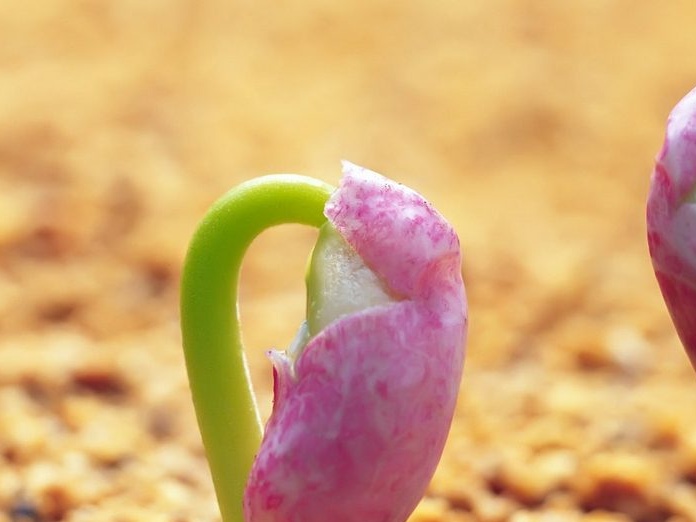 You may be interested in:
You may be interested in:Grains are harvested from ripened pods. They are torn off and dried in the sun with a cloth or paper. Beans are shaken when the leaflets open. Damaged grains are thrown away, and the rest is stored in jars with tight lids. Stocks are placed in a dark, cool place. Planting material is collected from the bottom of fruitful and healthy bushes. Grains are stored on the bottom shelf of the refrigerator.
Reviews
Helena
Lovers of asparagus beans are better planted and bush, and curly. Then it will be possible to harvest from mid-summer until the end of autumn. Plants are not afraid of light frosts. Long stalks of curly beans look beautiful on hedges or gazebos. The fruits are always clean, no need to bend down to pick them. Caring for string beans is easy. However, the plant is demanding for watering, especially during the setting and fruit growth.
Vladimir
Beans should be planted after preliminary germination of grains. If you skip the preparation stage, the sprouts will not appear soon. Seeds are better to buy zoned. In climbing plants, the yield is higher. But at the bush beans, the fruits ripen in concert and she does not need support. To grow more beans, you need to water it.
Ksenia
Legumes love potassium, which is abundant in wood ash. Ashes can be added to each hole during planting. When growing asparagus beans in the country, it is important not to miss the moment of milk maturity, which lasts 1-2 days. After harvesting, I do not dig out the roots. They contain special nodules that enrich the soil with nitrogen. The remaining roots rot until spring, turning into organic fertilizer.
Summer residents who have grown green beans prepare healthy dishes from it. High-quality seed and its proper preparation is the key to a good harvest. Curly species can be grown just for decoration. Breeders created many varieties with buds of different colors. Asparagus beans are planted to get tender pods. A good grain harvest is collected in regions with a warm climate. To get more fruits, you must follow the rules of agricultural technology of beans.

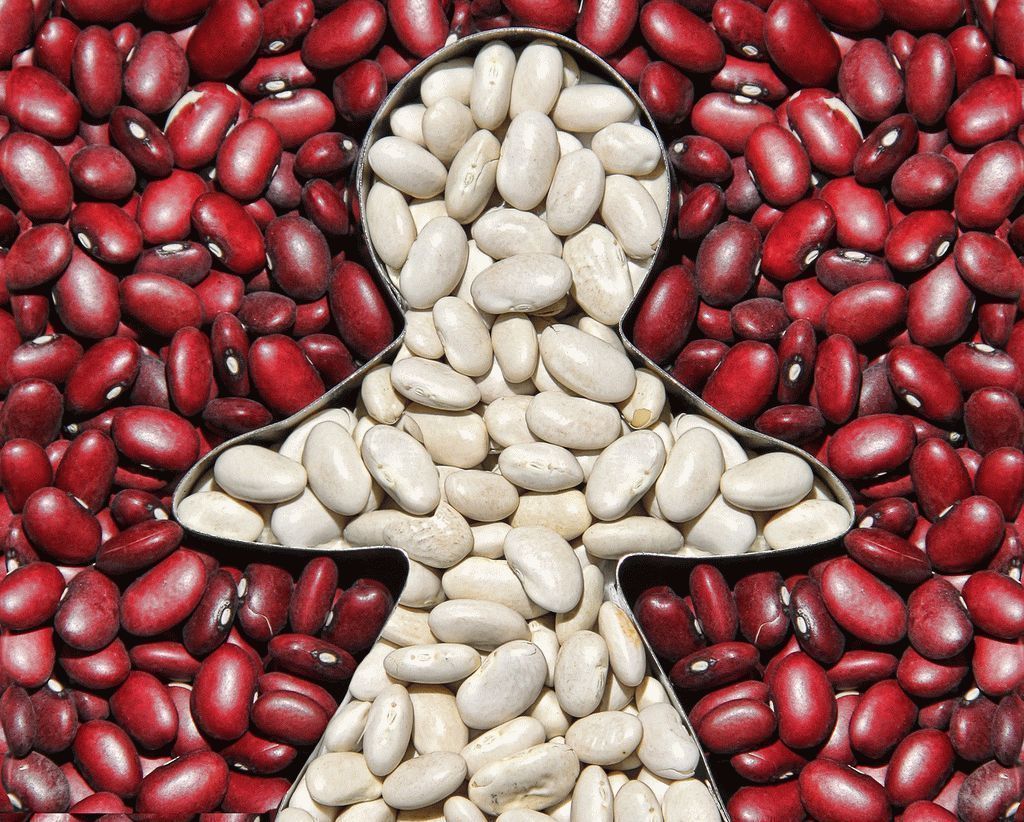
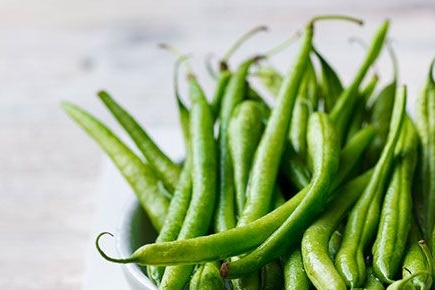
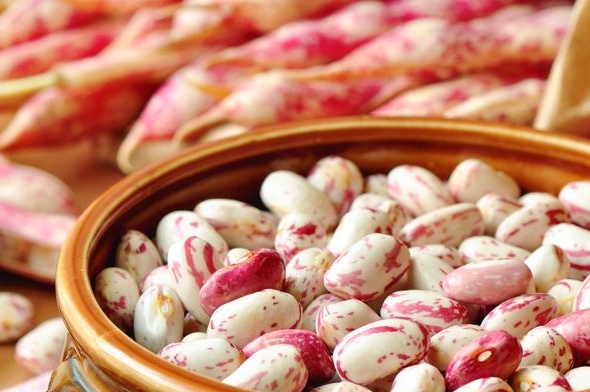
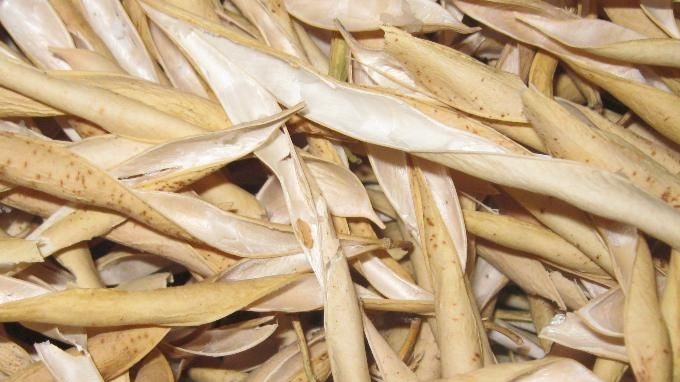 Bean flaps: useful properties, contraindications, benefits and harms
Bean flaps: useful properties, contraindications, benefits and harms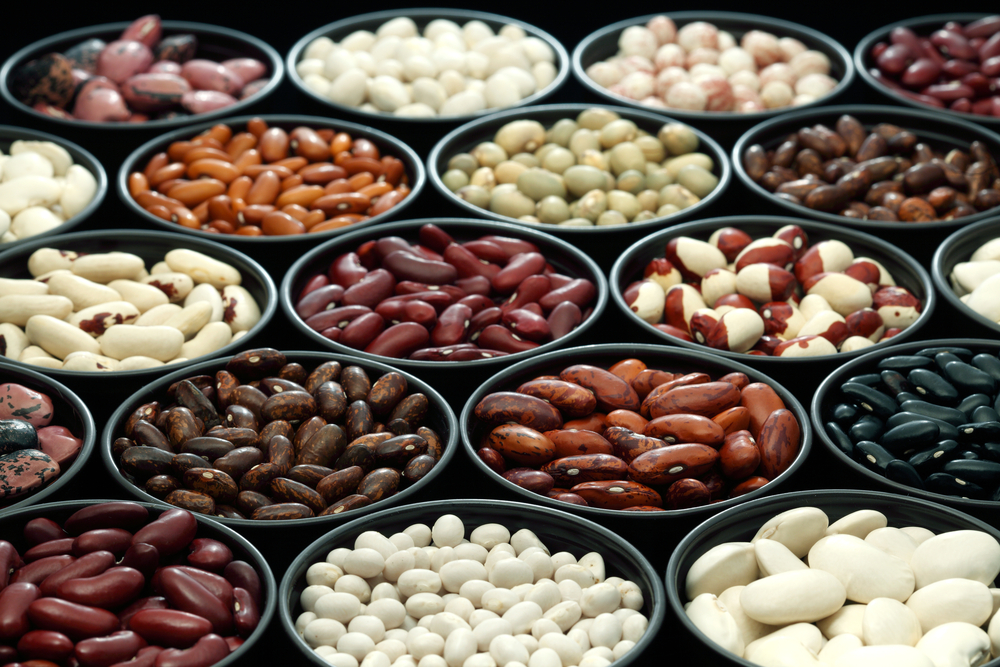 Beans for the body: composition, benefits, contraindications
Beans for the body: composition, benefits, contraindications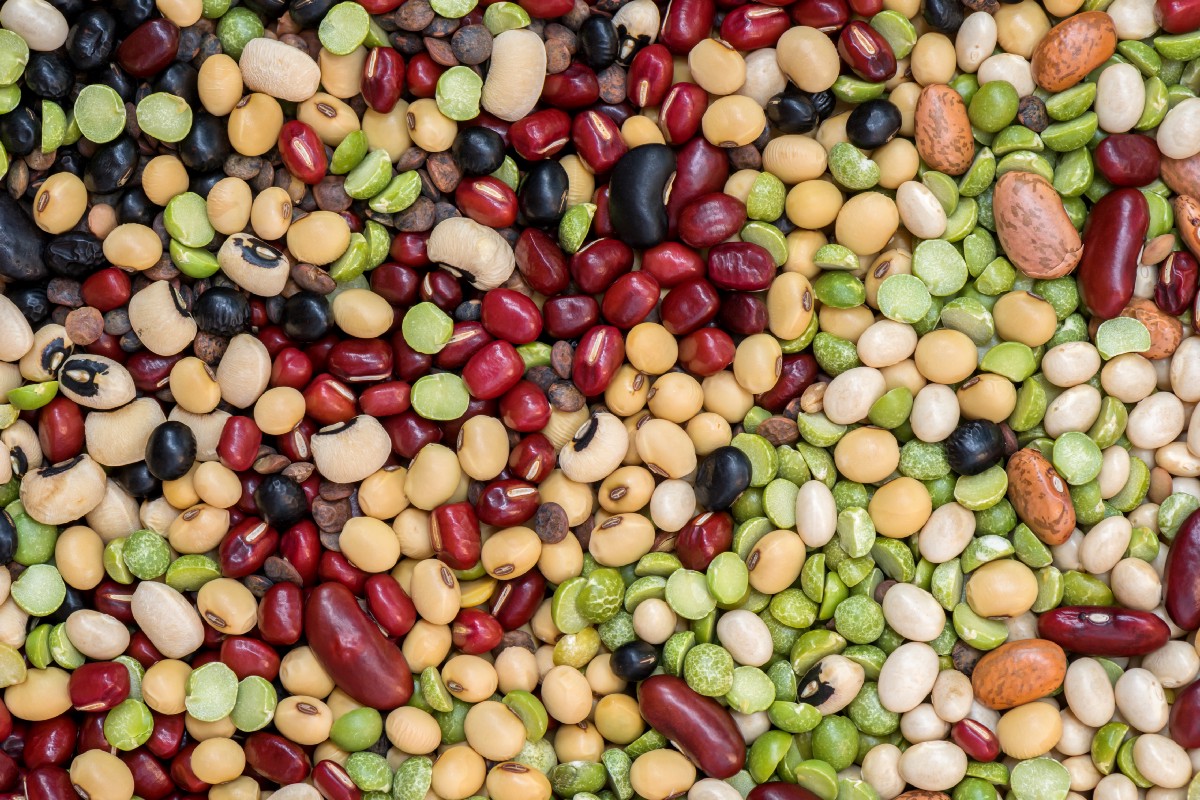 Types and varieties of beans: their name, description and photo
Types and varieties of beans: their name, description and photo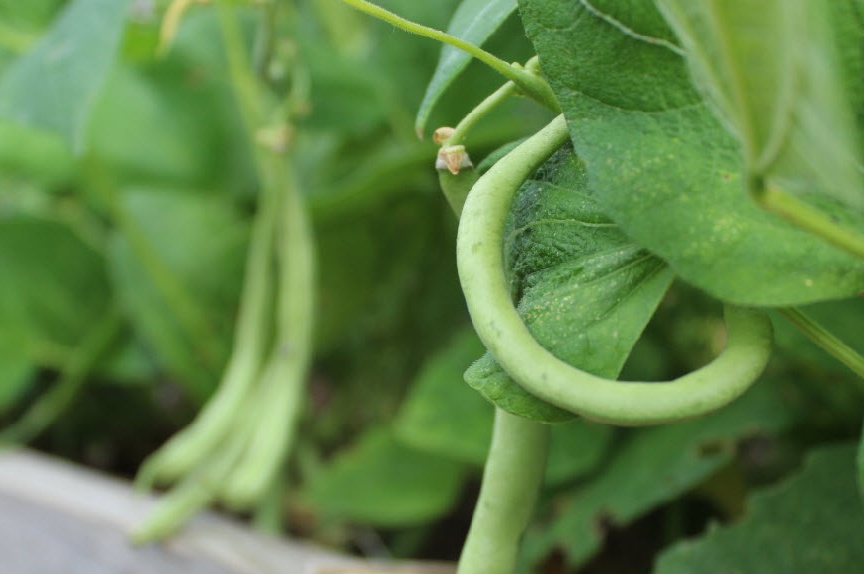 Description and photos of popular varieties of asparagus beans
Description and photos of popular varieties of asparagus beans